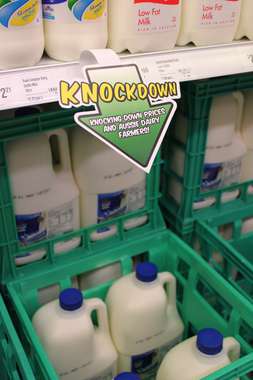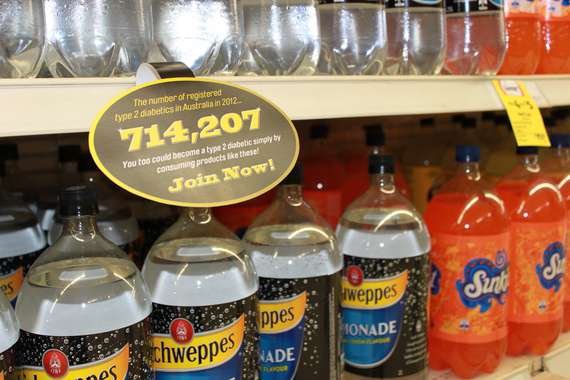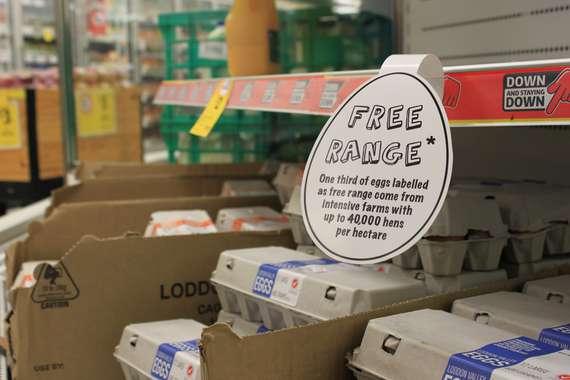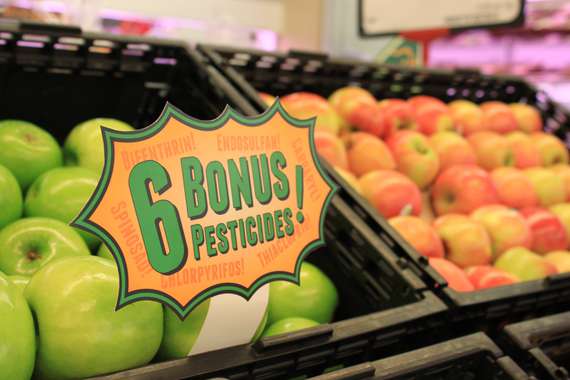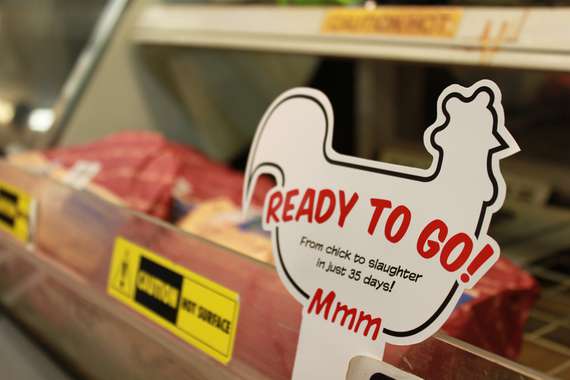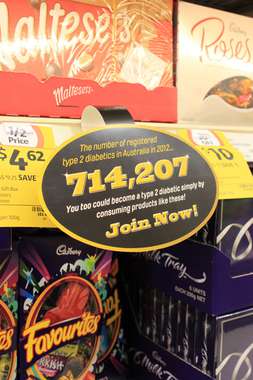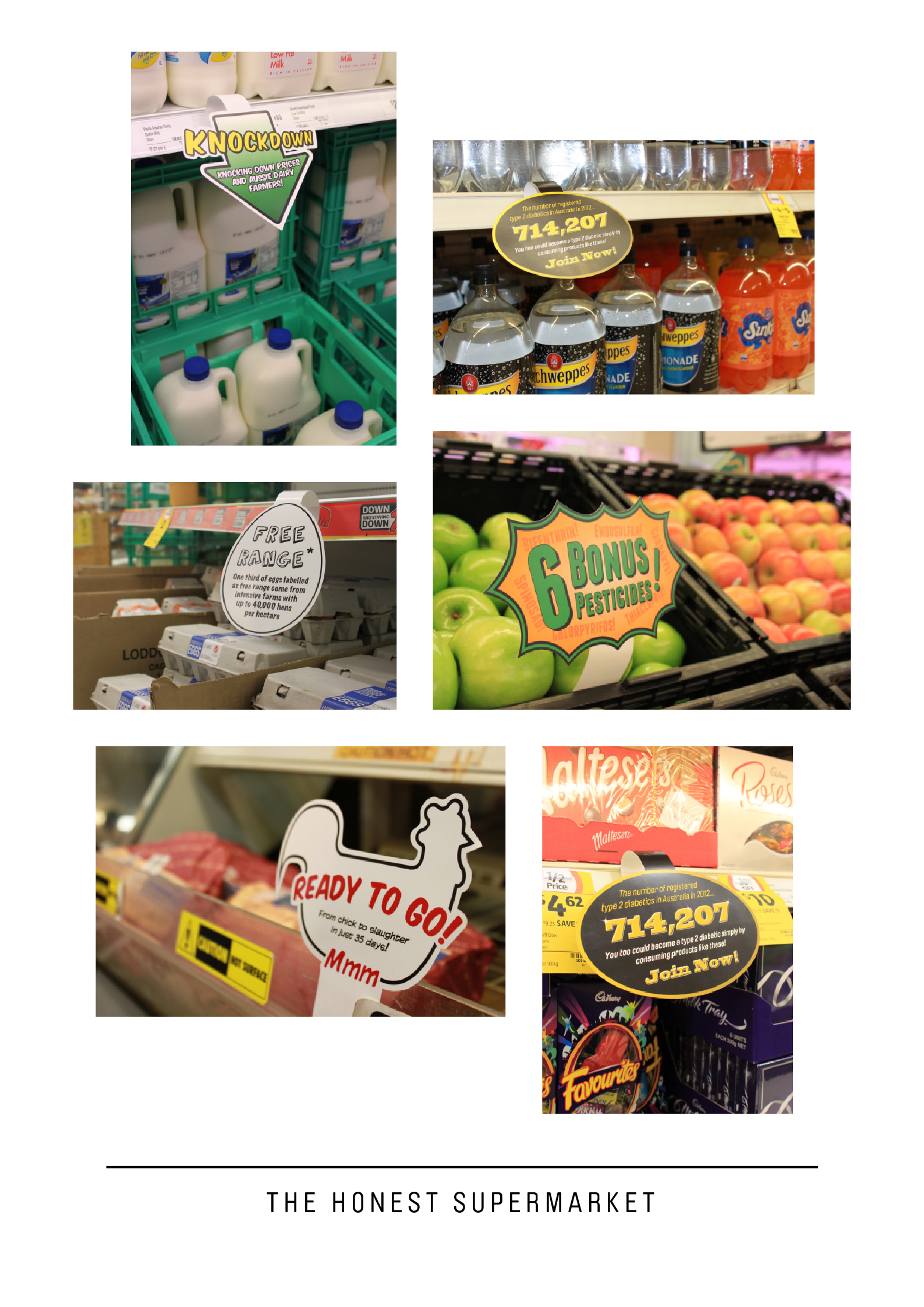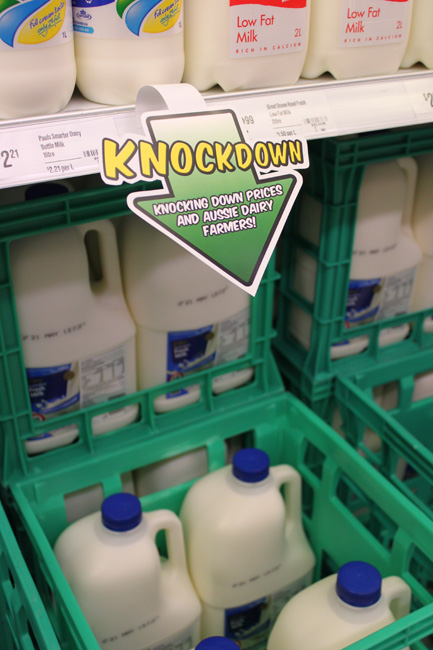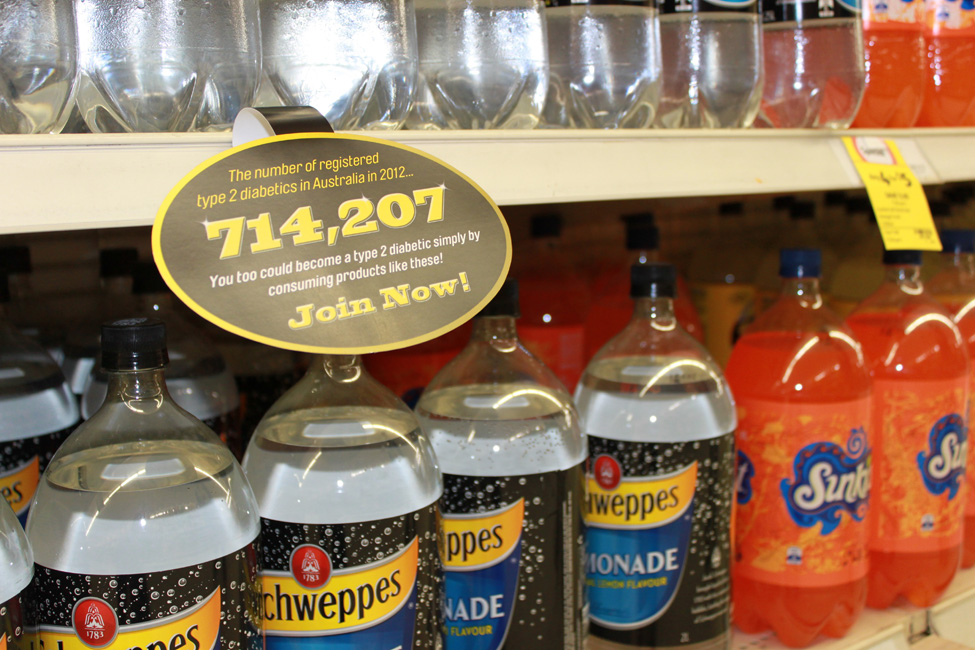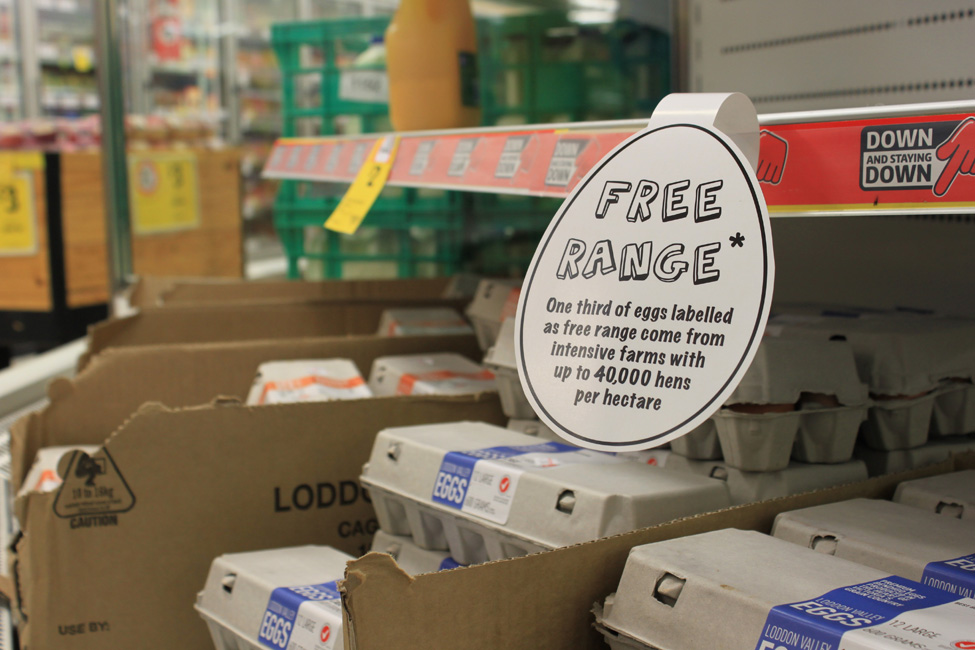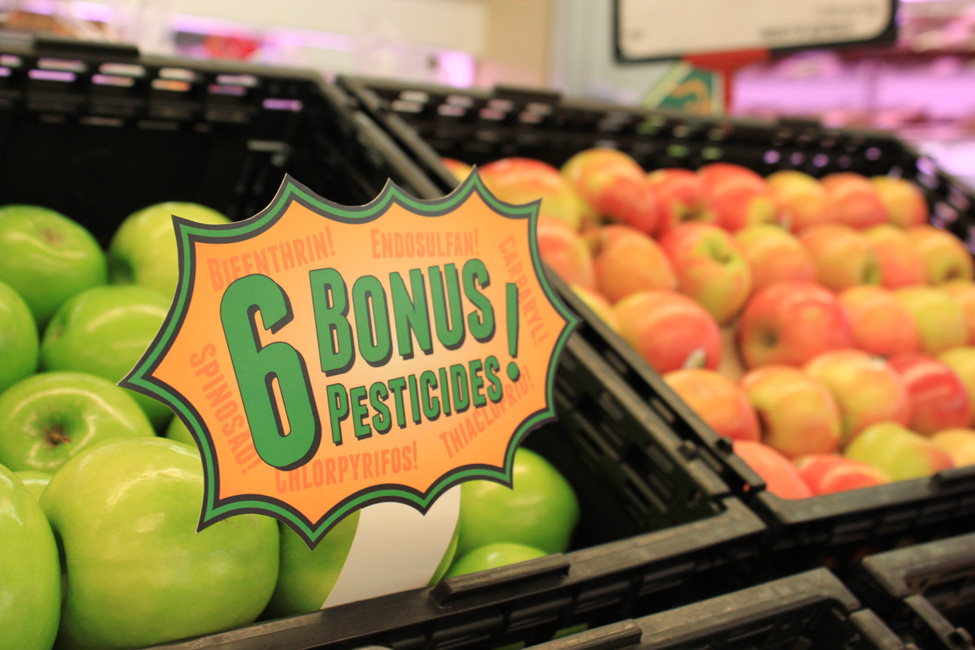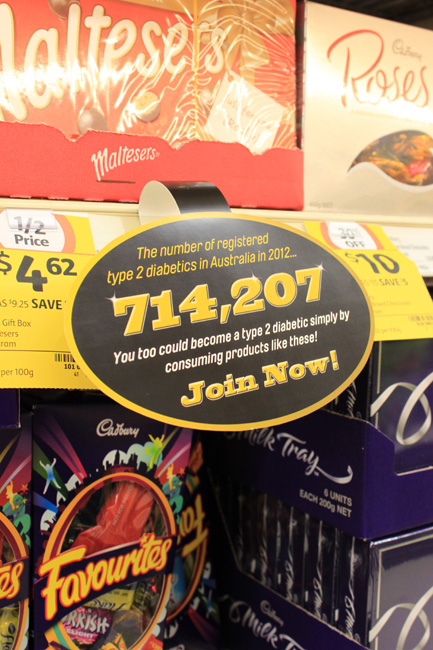The Honest Supermarket
This work has been commented by 3 curator(s). Read the comments
Title
The Honest Supermarket
Headline
The facts you didn't want to know about your food.
Concept author(s)
Tyler Zebra
Concept author year(s) of birth
1991
Concept author(s) contribution
Designed, created, and photographed the work.
Concept author(s) Country
Australia
Friendly Competition
Competition category
Visual communication practice
Competition subcategory
static
Competition field
academic
Competition subfield
student
Subfield description
University of Ballarat. Graphic Design/Multimedia
Check out the Food Democracy 2013 outlines of Memefest Friendly competition.
Description of idea
Describe your idea and concept of your work in relation to the festival outlines:
The idea behind my work was to target a number of problems with the Australian food industry. The issues I decided to focus on were:
• Short lifespan of meat chickens.
• Dairy farmers struggle to make profit.
• Misconception of “free range eggs”.
• Pesticides in apples.
• Prevalence of Type 2 diabetes.
I realised that all these issues relate to the products sold in supermarkets, so I decided to use signage within supermarkets to communicate my messages to the public. My aim was to make the public aware of the problems associated with some products by giving them shocking facts that would hopefully prevent them from purchasing the products.
What kind of communication approach do you use?
To achieve my aim I created a series of wobblers (little paper signs that dangle off supermarket shelves) each displaying the shocking facts about the products I targeted. I decided to use wobblers as they are usually used by companies and supermarkets to display the good facts about their products and therefore many people read them. I made my wobblers look like regular ones, using bright colours and big bold fonts with words such as “Bonus” and “Knockdown” to draw the public’s attention. The difference with my wobblers however is that once you’re drawn in by the headings, you then read the facts about the products that the supermarkets don’t want you to know. These facts were: • Meat chickens lifespan from chick to slaughterhouse can be as short as 35 days. • Hundreds of dairy farmers are being forced to stop farming due to the supermarkets selling their milk at just $1 a litre. • One third of eggs labelled a free range are from intensive farms with up to 40,000 hens per hectare. • There are a number of pesticides sprayed on apples during their growth including; Chlorpyrifos, Bifenthrin, Carbaryl, Endosulfan, Thiacloprid and Spinosad. • The number of registered type 2 diabetics in Australia in January 2012 was 714,207. This will hopefully result in preventing the public from purchasing the product as the off-putting information is fresh in their mind.
What are in your opinion concrete benefits to the society because of your communication?
I believe that my communication will benefit society in that it will give them the facts about products in supermarkets that they are not aware of, which allows them to make an informed decision about purchasing the product. Furthermore the information may also cause the public to prevent purchasing the products including; chicken, non-organic apples, cheap milk, intensive-farmed free range eggs and any other unhealthy items which would cause different modes of food production to arise that could be beneficial for society
What did you personally learn from creating your submitted work?
In conducting my research and creating my work I learnt a lot about the problems with food production in Australia. I learnt that:
• Meat chickens lifespan from chick to slaughterhouse can be as short as 35 days.
• Hundreds of dairy farmers are being forced to stop farming due to the supermarkets selling their milk at just $1 a litre.
• One third of eggs labelled a free range are from intensive farms with up to 40,000 hens per hectare.
• There are a number of pesticides sprayed on apples during their growth including; Chlorpyrifos, Bifenthrin, Carbaryl, Endosulfan, Thiacloprid and Spinosad.
• The number of registered type 2 diabetics in Australia in January 2012 was 714,207.
Why is your work, GOOD communication WORK?
I believe my work is good communication work because it first draws your attention, then shocks you with information you didn’t want to know about your food. This combined with the fact that it’s in the form of signage that’s placed right next to the product it addresses means that the information is going to have it’s greatest effect because it is fresh in your mind.
Where and how do you intent do implement your work?
My work was mocked up in the form of a series of wobblers which were then placed on supermarket shelves next to the products they address.
Did your intervention had an effect on other Media. If yes, describe the effect? (Has other media reported on it- how? Were you able to change other media with your work- how?)
My work had an effect on supermarket shoppers. As they went to purchase the products I targeted, they read the wobblers I created and were shocked by the information they revealed. This caused some to not purchase the product, which was the goal in creating the work.
Curators Comments
Roderick Grant
What definitively does work in this proposal is the context, the location of just-in-time information in close proximity to the food items on display.
The occupation of 'wobbler-space' is a sound tactic to undermine the larger strategy of food source information and disinformation. The aspect of 'shock' I'm less interested in, the important point being to provide a consumer with tools to make better decisions, at least, more informed decisions.
It is in that respect that the appropriation of the formal style of wobblers and other point-of-purchase advertising systems, that the project could step back and think more of continuums of decisions, rather than in good/bad oppositions.
At times, change is evolutionary, not revolutionary - as to choose, for instance, a better egg, the information on hand could serve not just to shock but to reorganize and entire section of a supermarket. Eggs could be reorganized based on a new set of definitions, the wobbler giving way to local organic, free range small farm eggs on the left side of a display, to huge industrialized mass produced eggs on the right side of a display.
In essence, I'm thinking of this project potentially expanding past this proposal, which is a really solid start, and definitely shows some good primary research into how supermarkets work in terms of communication.
...but after you get people's attention, how do you change their behaviour? Information and facts are not enough, but changing the environment in which they make decisions might get you closer? I guess I'm saying think of this solid initial work as 'Phase 1' - all of the valuable research you've done, and what you now know can't possibly fit into an endless series of wobblers...but to get people's attention that some real changes are about to arrive at their local supermarket, they may be essential tactics in a longer and larger strategy to change the way a supermarket organizes itself...?

Jason Grant
There were a lot of similar supermarket interventions entered this year.
I like this one mainly due to it's simple skilful appropriation of shopping slogans and the deft visual execution. This is a template that could maintain relevance by continually feeding off and undermining the supermarket's own marketing - 'Ready to Go: from chick to slaughter in just 35 days!... Mmm'.
One thing that was missing from all of these proposals was a method of implementation beyond a single individual. But this is where real impact could be achieved. You could transform sympathetic shoppers into interventionist activists by enabling the downloading and printing of these 'wobblers', perhaps fostering an online community by encouraging the posting of images of successful interventions, etc...
So the design of a process of broad implementation would be just as (more!) important than the design of the items.

Tony Credland
I feel this intervention onto the supermarket shelf would have an amusing and informative effect on the buying public. The design of the 'wobblers' (i never knew what they were called!) does indeed engage and draw in the consumer and show how little needs to be said to raise questions and debate around a subject.
This could be quite easy to crowd source participation and make the template available to a wide audience allowing many people to make their own 'direct action' into the public sphere. The subject matter could quite easily be widened to critique a wide range of food production across the whole range of supermarket produce.
The next step i guess would be to make information available so shoppers can not only not shop but also take alternative action and support more sustainable production as the action of just not buying of often not enough.


